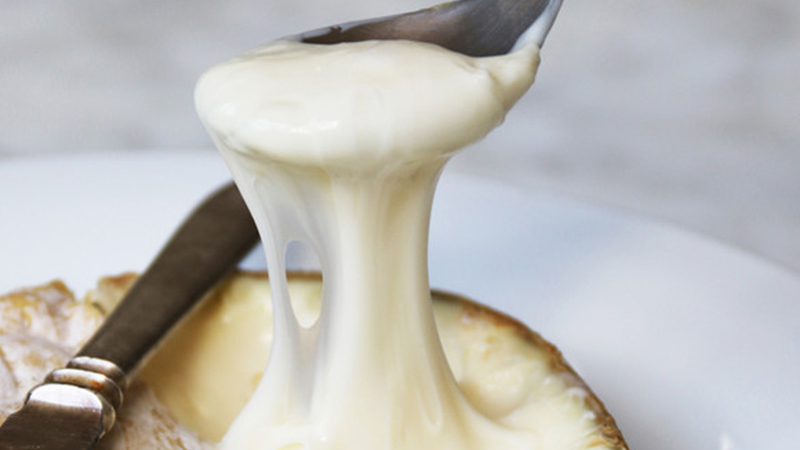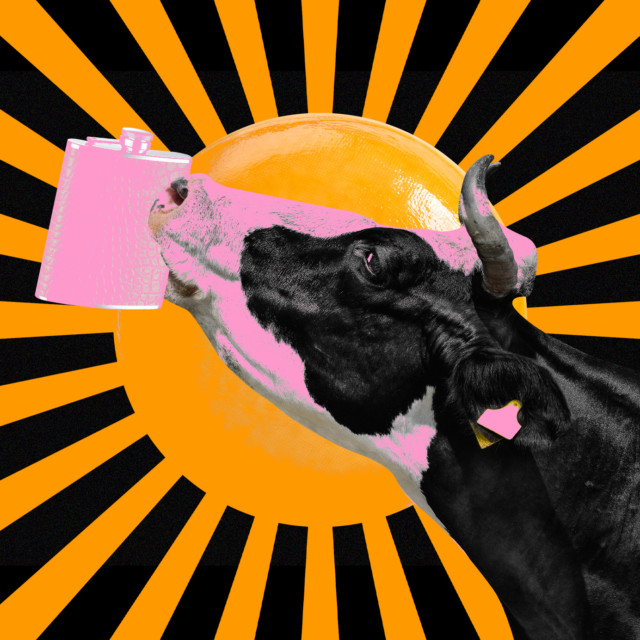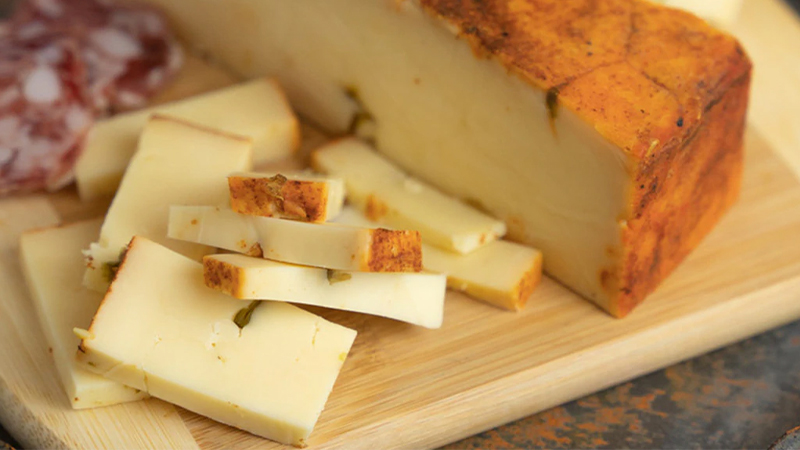Marriages between wine, beer, and even spirits with cheese are as harmonious as pairings come. These fermented foodstuffs share a certain pedigree — often born by accident with appealing results, not only in flavor, but as preservative methods for extending the shelf life and utility of fruits, grains, or milk. Additionally, the flavors and textures of any alcoholic beverage can be complementary to those of cheese; legendary pairings abound that transform both of the players: port (or porter) and blue cheese, Sancerre and chèvre, or even whiskey and Brie.
Cheese and booze belong together more than just as pairings, however. They are made for each other because they are often made with each other. The history of using booze in the development of cheese goes back almost as far as cheesemaking itself.
The transformation of milk into that which qualifies as cheese takes scarcely half a day. Fresh cheeses such as mozzarella, chèvre, and feta give an indication as to the character of most cheeses at the beginning of their lives: creamy, milky, possibly tangy, and relatively subtle in flavor. It is the process of affinage, or aging cheese, that transforms it into its myriad varieties, and that’s where alcohol has always had a significant role to play.

Washing Cheeses for Unclean Results
If you’ve ever been in the same room with a washed-rind cheese such as Époisses, you’ll know there’s nothing sanitized about it. “There’s a myth that Époisses is not allowed on the Paris metro because of the aroma,” says Charles Duque, managing director-Americas of the French Dairy Interbranch Organization. Beneath its aggressive exterior, however, lies an unctuous paste that can best be summarized with the words “bacon custard” — an umami bomb that evolves due to Époisses’s treatment with Marc de Bourgogne, a pomace eau de vie made in Burgundy.
Michele Molier, director of education for NYC’s Murray’s Cheese, explains the lore behind washed-rind cheeses, which begins in a monastery: “It was probably some monk intern’s job to go around and ‘clean’ the monastery, which should be taken with a grain of salt — literally — since the salt water solution he was likely using as a sanitizer would have been bacteria soup by the time he got to the cheese caves.” In an effort to remove some tufts of white mold that had started to form on the cheese wheels, the same rag that had been used to clean every inch of the monastery was applied to wipe down the cheeses. “It introduced this really chaotic bacterial environment to what was already a chaotic bacterial environment in the cheese,” Molier says. This created a particular strain called Brevibacterium linens, resulting in a sticky, stinky, orange rind — the very unholy opposite of what the monk was trying to achieve. Since nothing could be wasted in the monastic lifestyle, however, “they tasted it; nobody died,” says Molier. Not only that, the result was thought to be appealing enough that the monks began to purposefully recreate those conditions.
Many washed-rind cheeses such as Taleggio stop there, relying on a saline brine. But as for Époisses, “We all know the monks were alcoholics,” says Duque. It is therefore probable that any alcohol on hand would also have been used in the cleaning solution. More importantly, though, adding liquor to the cheese-washing process may have been an attempt to differentiate it, after the Cistercian monks responsible for creating Époisses left Burgundy and entrusted the recipe to local farmers’ wives. “They wanted it to be in the court of King Louis XIV.,” Duque says — an economic strategy. “In order to have that royal seal of approval, it needed to be something special, and they made it something special by using what they had.” What they would have had in the village of Époisses, from which the cheese takes its name, was Marc de Bourgogne, the rough-edged, full-flavored spirit, responsible for creating the rich cheeses.
Today, many cheesemongers have continued the tradition of employing alcohol in the brines of their washed rind cheeses. These include beer-washed Chimay à la Bière, cider-washed Murray’s Cave Aged Greensward, and Jasper Hill Gin Washed Harbison, among many others.
It’s All in the Marinade
Soaking, or marinating, is the other primary approach for using alcohol in the development of cheese, which also occurs during the beginning stages of the affinage process. (It is rare, though not unheard of, to have alcohol added directly to the milk before acidification in cheesemaking, though this runs the risk of cutting off the bacteria before they get going.) The most famous example is Spain’s Drunken Goat, a wine-washed cheese style also known as Cabra or Murcia al Vino. Italy also has a rich tradition with cheeses made in this fashion, known as ubriaco, or drunk cheese. Rather than applying an alcohol-laced brine throughout the aging process to encourage rowdy bacteria, soaking freshly pressed cheese in alcohol before it ages tends to slow down microbial activity. This creates a different, microbial development with the enzymes in the cheese, however, such that the alcohol aromatizes the cheese without actually rendering it intoxicated.
Naturally, this type of cheese also has its folklore — this time from farmers trying to protect their cheese wheels from burglary by stashing them in wine barrels — for another “happy accident” origin story. This one, however, is considered dubious by cheese professionals. Molier offers a contradiction: “Is it a happy accident, or is it just hedonistic genius?”
Britton Welsh of Utah’s Beehive Cheese creates a modern application of this technique in Beehive’s Pour Me A Slice, a classic cheddar that is marinated with Basil Hayden’s bourbon during the aging process. “Lately, there’s a lot of buzz with craft beers and artisan cheeses, so Basil Hayden’s really wanted to be a maverick in pioneering this idea of spirits and cheese pairing,” says Welsh, by specifically creating a cheese that was born to pair with its whiskey. A 20-pound wheel of Beehive’s Promontory Cheddar is soaked in three-quarters of a cup of Basil Hayden’s and sealed — an anaerobic method that is dissimilar to a lot of soaked cheeses, but creates its own alchemy. “Alcohol in the presence of organic acids (like those in cheese) is unstable,” says Welsh. “What’s going on is that enzymes in the cheese are going to chemically react with the alcohol and produce a lot of ketones and esters, giving off these fruit and floral notes.” The result is an elegant, fruity cheddar with just an essence of bourbon, which imparts to the cheese flavors like vanilla and baking spice.
Cheddars may also have smaller curds, rather than full wheels, soaked in alcohol before they are cut and pressed (a process actually called “cheddaring”) — resulting in infused cheeses that showcase a marbled look but tend to be more alcohol-forward on the palate.
As for whether hard, alcohol-soaked cheeses are actually hard cheeses? “We’ve done the math on the formula,” says Welsh, “and if all of the alcohol actually stayed in the cheese, it would be like .1 percent [ABV].”

